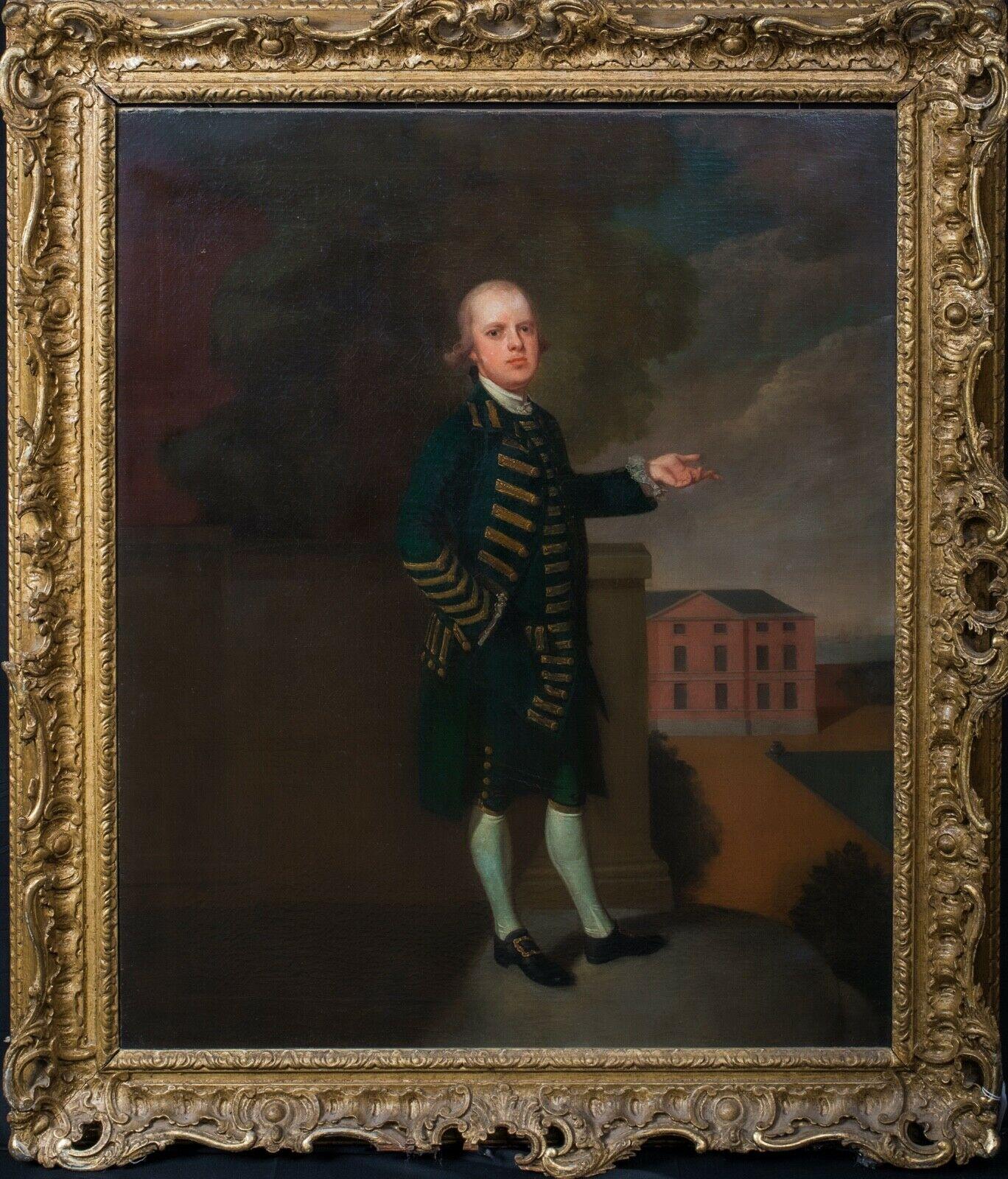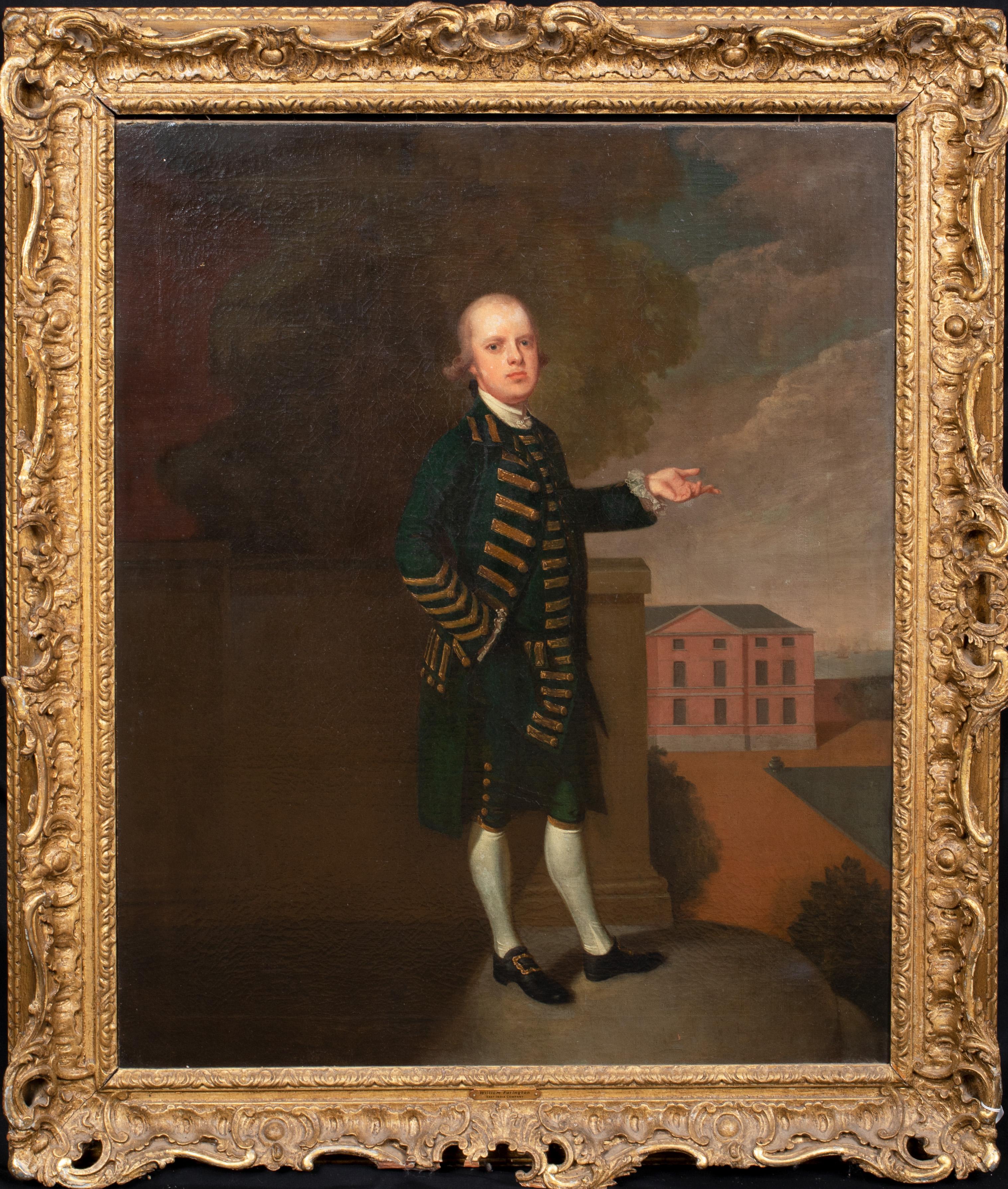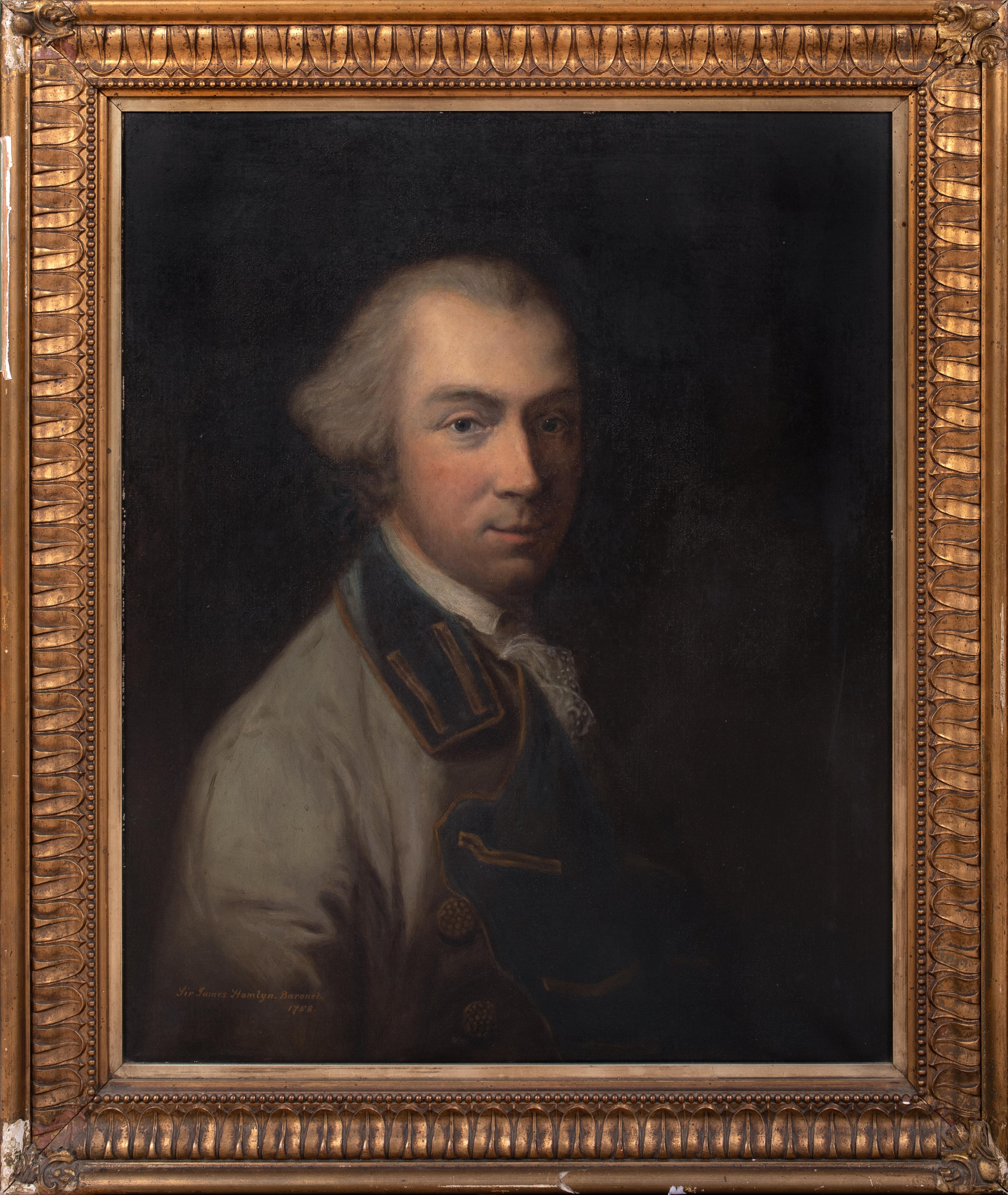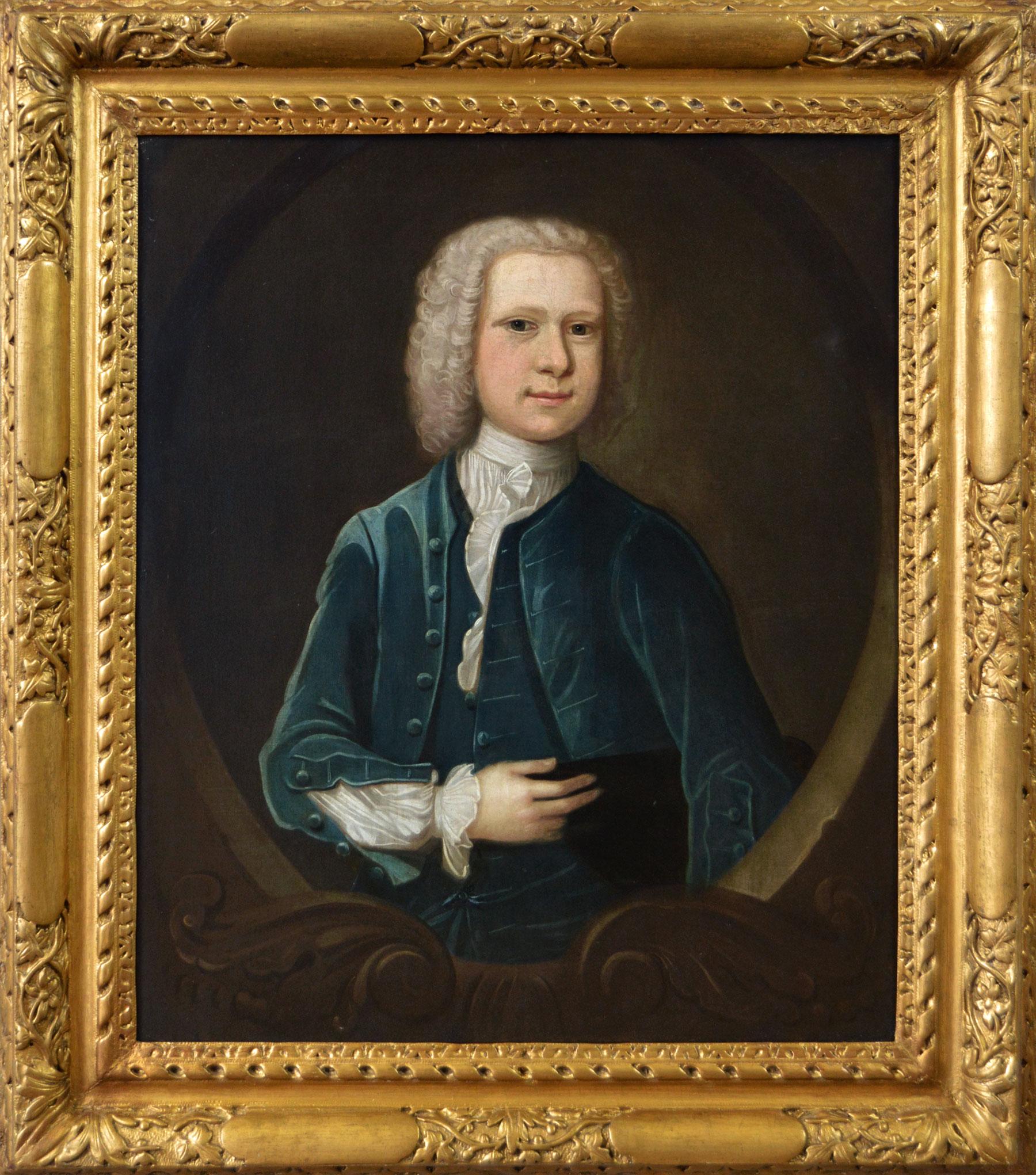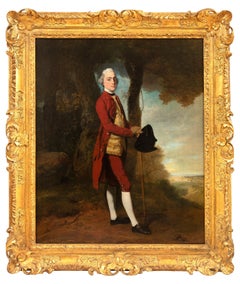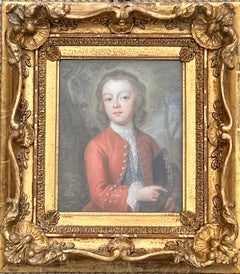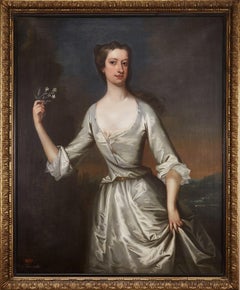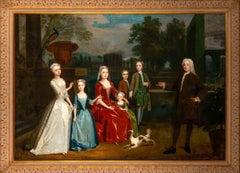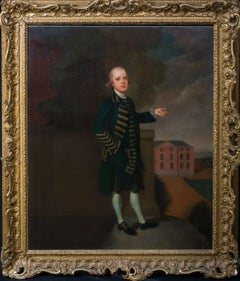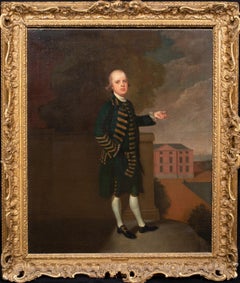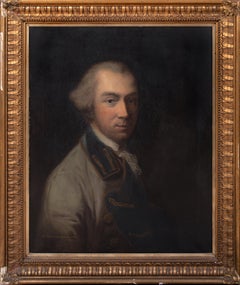Items Similar to 18th century portrait of the German Flautist and composer Johann Joachim Quantz
Want more images or videos?
Request additional images or videos from the seller
1 of 9
18th century portrait of the German Flautist and composer Johann Joachim Quantzc.1750
c.1750
$15,134.18
$18,917.7220% Off
£10,800
£13,50020% Off
€12,836.67
€16,045.8420% Off
CA$20,599.14
CA$25,748.9320% Off
A$23,041.43
A$28,801.7920% Off
CHF 11,990.90
CHF 14,988.6220% Off
MX$283,647.91
MX$354,559.8920% Off
NOK 152,549.07
NOK 190,686.3420% Off
SEK 143,121.10
SEK 178,901.3720% Off
DKK 95,774.38
DKK 119,717.9720% Off
Shipping
Retrieving quote...The 1stDibs Promise:
Authenticity Guarantee,
Money-Back Guarantee,
24-Hour Cancellation
About the Item
Portrait of Johann Quantz (1697-1773), flautist and composer, wearing a blue velvet coat, waistcoat and breeches, standing in a garden landscape with his flute and music on a bench beside him, c.1750.
Johann Joachim Quantz was a flute player and maker and composer at royal courts, being one of the most famous musicians of his day. He was flute teacher to Frederick the Great and composed hundreds of flute sonatas and concertos, including his 'On Playing the Flute', a treatise on flute performance which became a valuable reference for flute playing in the 18th century.
He was born in the village of Oberscheden, in the Electorate of Hanover in Germany. His father was a blacksmith and at the age of 11, after being orphaned, he began an appreticeship in 1708 with his uncle, Justus Quantz, a town musician in Merseburg. At the completion of his apprenticeship Quantz was able to play most of the principle string instruments and the oboe and trumpet.
In 1716 Quantz accepted an invitation to join the town band in Dresden, the capital of Saxony and one of the most important artistic centres in Europe. In 1718 he became oboist to the court of August II, Elector of Saxony and King of Poland, but shortly after decided to pursue the flute, studying under the famous French flute player Pierre-Gabriel Buffardin from the Royal Orchestra.
He embarked on a Grand Tour of Europe between 1724 and 1727, with the financial support of the Dresden court, studying with Francesco Gasparini in Rome, meeting Alessandro Scarlatti in Naples, befriending flutist Michel Blavet in Paris and Handel in London.
After a visit to the Prussian court in 1728, the Crown Prince, Frederick of Prussia who had been deeply impressed by Quantz, decided to study the flute and Quantz became his teacher for several visits a year. When Frederick became King in 1740, Quantz accepted a position as flute teacher, maker and composer at the court of Berlin, and he remained in service with Frederick until his death in 1773.
- Creation Year:c.1750
- Dimensions:Height: 24.41 in (62 cm)Width: 19.1 in (48.5 cm)
- Medium:
- Movement & Style:
- Circle Of:Arthur Devis (1712 - 1787)
- Period:
- Condition:
- Gallery Location:Bath, GB
- Reference Number:1stDibs: LU9528633882
About the Seller
5.0
Vetted Professional Seller
Every seller passes strict standards for authenticity and reliability
Established in 2002
1stDibs seller since 2015
37 sales on 1stDibs
Associations
The British Antique Dealers' AssociationLAPADA - The Association of Arts & Antiques DealersInternational Confederation of Art and Antique Dealers' Associations
- ShippingRetrieving quote...Shipping from: Bath, United Kingdom
- Return Policy
Authenticity Guarantee
In the unlikely event there’s an issue with an item’s authenticity, contact us within 1 year for a full refund. DetailsMoney-Back Guarantee
If your item is not as described, is damaged in transit, or does not arrive, contact us within 7 days for a full refund. Details24-Hour Cancellation
You have a 24-hour grace period in which to reconsider your purchase, with no questions asked.Vetted Professional Sellers
Our world-class sellers must adhere to strict standards for service and quality, maintaining the integrity of our listings.Price-Match Guarantee
If you find that a seller listed the same item for a lower price elsewhere, we’ll match it.Trusted Global Delivery
Our best-in-class carrier network provides specialized shipping options worldwide, including custom delivery.More From This Seller
View AllAn English 18th century portrait of James Stanley, standing in a landscape
By John Hamilton Mortimer
Located in Bath, Somerset
Portrait of James Stanley (1750 - 1810), circa 1775-1778, full-length, wearing a red coat and breeches and a gold embroidered waistcoat, hold...
Category
1770s English School Portrait Paintings
Materials
Canvas, Oil, ABS
18th century pastel portrait of a young boy in a wooded landscape
By Arthur Pond
Located in Bath, Somerset
This little jewel of a pastel of a young boy in his smart red jacket and silver trimmed waistcoat is by an artist working in the circle of Arthur Pond and ...
Category
18th Century English School Portrait Paintings
Materials
Pastel
$7,847 Sale Price
20% Off
English 18th century portrait of Henrietta Pelham-Holles, Duchess of Newcastle.
By Charles Jervas
Located in Bath, Somerset
Portrait of Henrietta Pelham-Holles (née Godolphin) (1701-1776), Duchess of Newcastle, standing in a wooded landscape with a river beyond, three-quarter length wearing an ivory silk ...
Category
1720s Old Masters Portrait Paintings
Materials
Canvas, Oil
18th century painting of the Dalbiac family in the gardens of a country house
By Charles Philips
Located in Bath, Somerset
The painting depicts James (Jacques) Dalbiac, his wife Louise (ne de la Porte) and their five children, James, Charles, Louise, Marianne and Martha in the ornamental gardens of a grand country estate.
The extensive gardens extend into the distance with gardeners working in the background and figures strolling through the avenues of trees. A peacock and peahen can be seen on the wall to the left and a potted orange tree to the right. Louise Dalbiac holds an orange taken from the orange tree, aluding to the family's faith and their loyalty to the protestant King William of Orange and their adopted country.
The Dalbiacs were wealthy London silk and velvet merchants of French Huguenot origin who had fled France at the end of the 17th century to escape persecution for their protestant faith. England offered safe refuge and their skills and industriousness allowed them to establish one of the most successful businesses in London's Spitalfields which became a new centre of the silk trade, effectively leading to the collapse of the once dominant French silk industry. Both sons, James and Charles followed their father and Uncle into the family business, successfully growing the family's fortune and each going on to own their own country estates.
A conversation piece is a genre of painting used to describe group portraits of families and friends, often depicted with their servants and family pets and set within an elegantly furnished interior or the garden of a grand country house. They were a celebration of the intimacy of family relations as well as a sign of status, property and the power of succession. The informality of conversation pieces grew popular in 18th century England, allowing the sitters to present themselves in a more relaxed pose, perhaps engaged in intellectual conversation or showing their talents or interests. In this present portrait, the Dalbiacs are shown richly dressed and and at leisure in a grand country house setting, conveying their success and cultural and social aspirations.
Charles Philips (c.1703–1747) was an English artist known for painting a number of portraits and conversation pieces for noble and Royal patrons in the mid-eighteenth century. He was the son of portrait painter Richard Philips...
Category
Early 18th Century Old Masters Portrait Paintings
Materials
Canvas, Oil
English 18th century portrait of a lady, Circle of Thomas Murray (1663-1735)
Located in Bath, Somerset
An early 18th century portrait of a young lady, half length, wearing a blue silk gown with white chemise and gold trimmed cloak draped across her arm and shoulders. Her sensitively observed soft expression and skilfully painted youthful 'dewy' complexion are reminiscent of the portrait style of John Closterman whose work Murray would have been familiar with, being a close colleague of Murray's teacher, John Riley.
An old label on the reverse identifies the sitter as a young Princess Charlotte...
Category
Early 18th Century Old Masters Portrait Paintings
Materials
Canvas, Oil
$8,407 Sale Price
20% Off
English 17th century portrait of John Ludford Esquire
By Mary Beale
Located in Bath, Somerset
Portrait of John Ludford (1653-1681), wearing a lace jabot and brown and gold trimmed cloak in a feigned stone oval cartouche. Inscribed 'John Ludford, Esq, nat. 14th March 1653, Ob,...
Category
Late 17th Century Baroque Portrait Paintings
Materials
Canvas, Oil
$12,331 Sale Price
20% Off
You May Also Like
Portrait Of A Gentleman & His Estate, Attributed to Arthur Devis, 18th Century
By Arthur Devis
Located in Blackwater, GB
Portrait Of A Gentleman & His Estate, 18th Century
attributed to Arthur DEVIS (1712-1787)
One of a matching pair - the other is believed to be the brother
Large 18th century Eng...
Category
18th Century English School Portrait Paintings
Materials
Canvas, Oil
large 18th century portrait gentleman oil on canvas
Located in York, GB
A fine, imposing 18th century portrait of an unknown aristocrat,housed in a gilt frame
The artist is also unidentified but certainly a talented hand, in the circle of one of the fine old masters of the period
The size overall is 148 x 121 cm whilst the painting is 128 x 101 cm
In overall good condition the frame at the bottom has bowed slightly
The painting has been checked whilst being cleaned and has not been affected in any way .
SHIPPING
Free delivery to mainland uk ,worldwide shipping available please email for quote
Delivery usually within 14 working days, insured
please provide telephone/email details for courier.
All taxes/customs etc to be paid for by purchaser.
RETURNS (The Consumer Contracts Regulations) Whilst we are sure that you will be extremely happy with your purchase,
if for any reason you are not, then you are entitled to return the item to us for a refund.
For all purchases made
you are entitled to return the item(s) for a period of up to 14 days
following receipt by you or a representative indicated by you.
Please contact us to confirm that you are returning the item(s)
and the reason for doing so.
Upon receipt of the item(s) we will refund the purchase price via your original payment method...
Category
18th Century Old Masters Portrait Paintings
Materials
Oil
$7,707 Sale Price
44% Off
Free Shipping
Portrait Of George Farington, East India Company, 18th Century
By Arthur Devis
Located in Blackwater, GB
Portrait Of George Farington, East India Company, 18th Century
attributed to Arthur DEVIS (1712-1787)
One of a matching pair - the other is belie...
Category
18th Century Portrait Paintings
Materials
Canvas, Oil
Portrait Of Sir James Hamlyn (1735-1811), MP for Carmarthen, Sheriff of Devon
By Joshua Reynolds
Located in Blackwater, GB
Portrait Of Sir James Hamlyn (1735-1811), MP for Carmarthen, Sheriff of Devon, 18th Century
follower of Sir Joshua REYNOLDS (1723-1792)
Large 18th Century portrait of Sir James Ham...
Category
18th Century Portrait Paintings
Materials
Canvas, Oil
English School 18th Century Oil - Portrait of a Gentleman
Located in Corsham, GB
This delightful portrait is set within an ornate gilded frame featuring intricate scrollwork and floral motifs. The young gentleman is well dressed in a fashionable brown coat and cr...
Category
Early 18th Century Portrait Paintings
Materials
Oil
18th Century portrait oil painting of a gentleman
Located in Nr Broadway, Worcestershire
Follower of Enoch Seeman the Younger
German, (1694-1744)
Portrait of Gilbert Sympkin
Oil on canvas
Image size: 29.25 inches x 24.5 inches
Size including frame: 38 inches x 33.25 inches
A fine three quarter length portrait of a gentleman traditionally identified as Gilbert Simpkin (Sympkin), follower of Enoch Seeman the younger, C1720. The portrait is set in a feigned sculptured oval cartouche, a device used to give a sense of depth. The sitter is depicted wearing a fashionable blue jacket and matching waistcoat with a white chemise and lace jabot. He wears a powdered wig in the fashionable style of the day and is posed holding his hat under his left arm with the fingers of his right hand stretched out. At court, long fingers signified wealth, culture and intelligence. The painting has clearly been executed by an artist of great ability who has been influenced by Enoch Seeman the younger.
Gilbert Simpkin (Sympkin) was born in London on 24 August 1683, the son of John Simpkin and Susannah Butler. His grandfather was also called Gilbert Simpkin. He entered Oxford University in 1700 where he studied at St John’s College. In 1702, he became a student of Middle Temple, which at the time was one of the world’s most important centres of legal education. He later settled in Plymouth and then Bristol. He died in Bristol on 15 May, 1744 and was buried at Bristol Cathedral. He remained unmarried and the portrait may well have been commissioned to commemorate when he was first Called to the Bar or perhaps had established his own practice.
Enoch Seeman or Seemann the younger was born in Danzig, Germany now Gdansk, Poland in 1694. His father was Enoch Seeman Senior, an artist of Flemish origin and his brothers Isaac, Noah and Abraham also became artists. He came to London with his father and brothers around 1704 and established himself as a portrait artist. From 1717 he became painter to the Royal court painting...
Category
18th Century Old Masters Portrait Paintings
Materials
Canvas, Oil
More Ways To Browse
Antique 18th Century English Frames
Plays The Flute
C Trumpet Used
Antique Blue Benches
Antique String Instrument
Antique Velvet Bench
Frederick Prince
Flute Player
Frederick Of Prussia
Antique French Garden Bench
Antique School Bench
Antique School Benches
English Garden Bench
18th Century Waistcoat
Antique Music Player
Antique English Garden Benches
Liu Ye In His Studio With
Liz Shepherd
